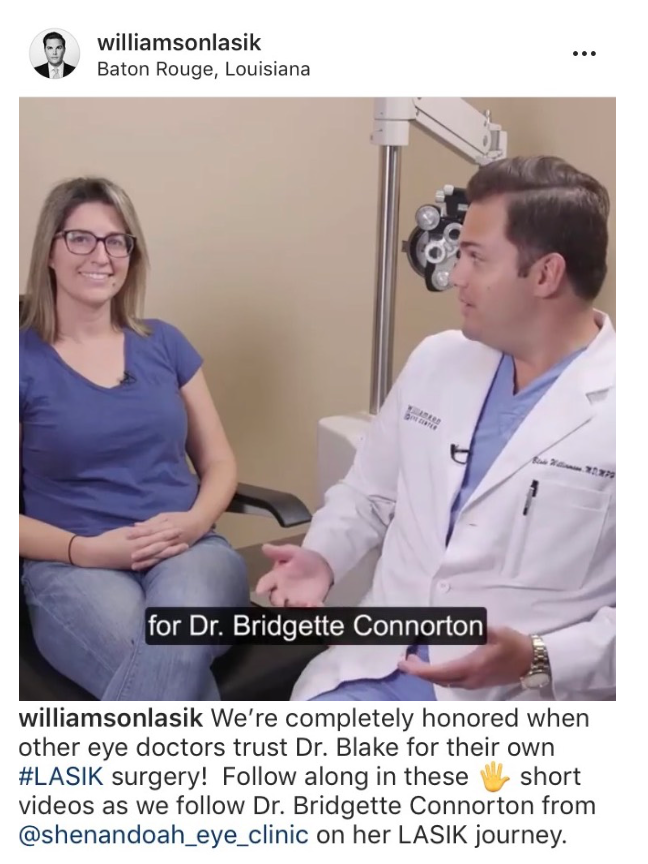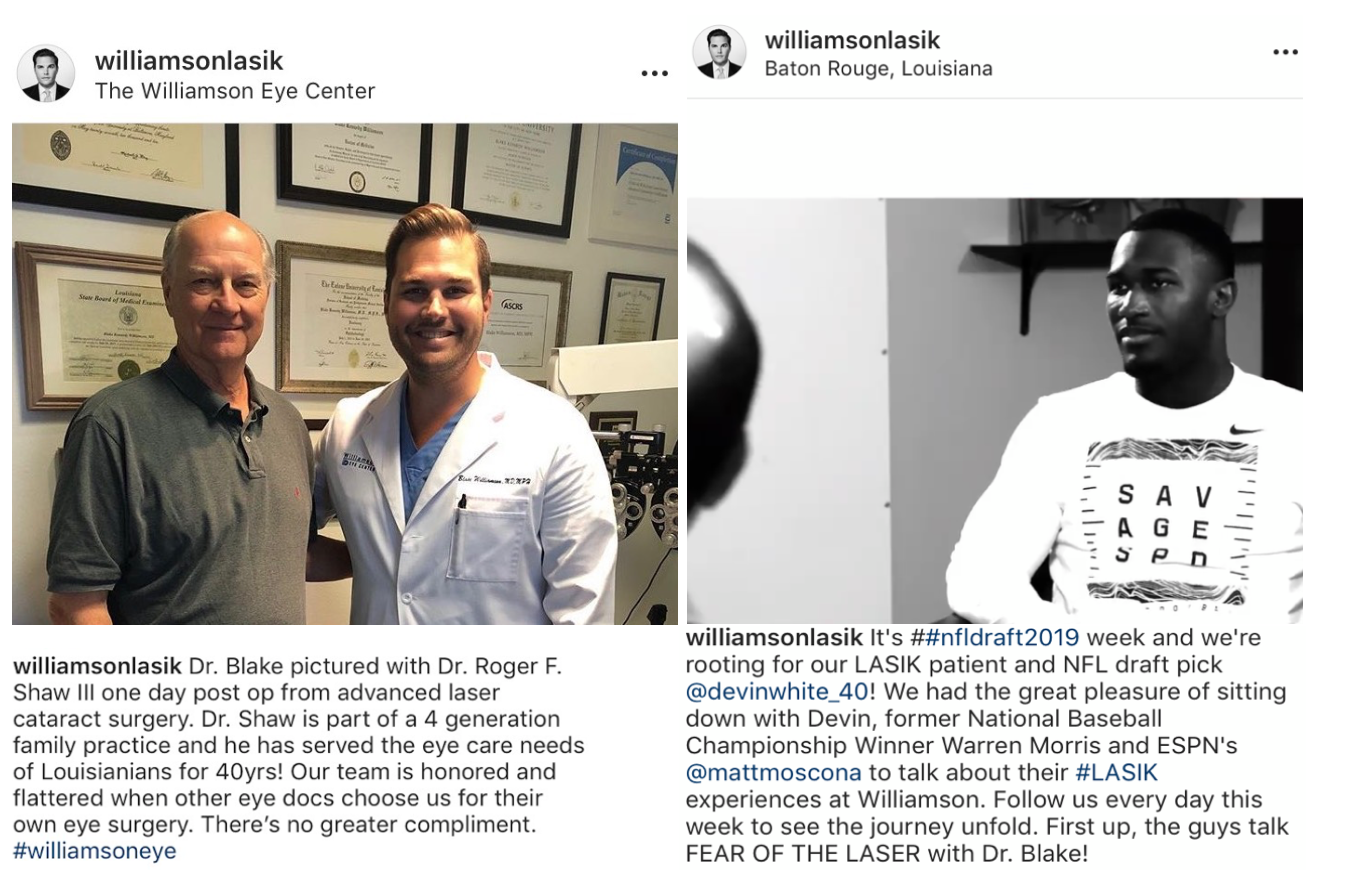Most MillennialEYE readers likely use social media personally. Some, however, may still question whether social media is needed professionally, particularly for an ophthalmology practice. But I would argue that, today, having a social media presence is a must for every business, including medical practices. Social media accounts—Instagram in particular—are the new website. When I want to research a restaurant, for example, I do not head to the establishment’s website but, instead, to its Instagram account. This enables me to learn about the restaurant’s specialties, visualize their food, and see how they talk about their offerings. As consumers, our patients are also moving in this direction and looking to Instagram more than ever before.
The world around us is changing constantly. Ophthalmologists who work in practices that do not prioritize social media may need to explain to their partners or colleagues just how much change is occurring. My friend Nick Sideris once put this into great perspective for me. He said, "In 1998, when the internet was first launched, parents were still telling their children to stay away from strangers and to never get into a stranger’s car. Fast forward to 2019, and we are now summoning strangers to our homes via the Uber app and paying to get into their cars." We must all adapt to these new times.
WHY INSTAGRAM?
Instagram is the fastest-growing social media platform, with about 1 billion users worldwide. Although Facebook has more users (about 2.3 billion), Instagram sees more engagement than Facebook, with 60% of Instagram users utilizing the platform every day. Whereas Facebook is about sharing information, Instagram is about sharing moments. The platforms are used differently, and their audiences differ. Instagram is where our 25-year-old to 45-year-old patients live, so this platform is especially important for ophthalmologists who perform laser vision correction.
For those setting out to use Instagram, as I recommend you do, it is important to first define what you want to do with your account. Setting a goal will help you to define your audience. For example, some medical professionals use Instagram to educate and network with a small circle of colleagues in their industry. Most, however, use Instagram to grow their brands and their practices; in this case, the audience expands to current and prospective patients, community members, colleagues, and industry members.
CONTENT ISN’T KING BUT THE KINGDOM
On Instagram, content is everything. Some ophthalmologists may wonder, what type of content should I post on Instagram? What do people want to see? What will resonate with my patients and my practice? At Williamson Eye Center, we adhere to the HT2, or HHTT, approach, which stands for humor, heartstrings, technology, tell a story. People want to laugh, they want to cry, they want to see cool technology, and, ultimately, they want to hear a story. Below are a few examples of how we work these elements into our Instagram posts.

Humor. I am lucky to work in a practice with team members who ensure that our coffee is ready every morning. One day, however, the coffee had not yet been made, so I told my colleague Dr. Pham that we should try to make it ourselves. Big mistake—the coffee pot basically exploded. So, we took a picture and shared the story on Instagram. Our staff members and audience enjoyed the humorous nature of this post.

Heartstrings. When a patient has a birthday around the time of his or her appointment, my staff and I enter the examination room singing Happy Birthday. In one case, a patient was brought to tears by this gesture. She later shared with us that her husband of 25 years had just passed away and that this was the first time she had smiled since his death.

Technology. Patients not only want to see cool toys but to know that you’re up to date on the latest and greatest treatment options. Share updates on your offerings and post when you introduce a new technology.

Tell a story. Last year, I performed LASIK on an optometrist in the Baton Rouge area. We shared an interview with the patient as well as a video of her surgery to give our Instagram followers a behind-the-scenes look at the laser vision correction process. Having another eye care professional share her LASIK journey was powerful, and our post received a substantial amount of impressions.
INSPIRE CONFIDENCE
Your social media content should be designed to inspire patients’ confidence in your skills. Whether they vocalize it or not, all of our patients fear that they are going to experience pain or go blind. It is important to show patients that they can trust you, and this can be achieved on social media in multiple ways, outlined below.

1. Go to the news outlets. News outlets are always looking for local stories, especially if you practice in a small town. It may be valuable to form a relationship with your local news channel. Our physicians appear on the local news programs often, and we share these stories with our followers on social media.

2. Treat other eye care providers and influencers. When a well-known optometrist who had been serving our community for 40 years needed surgery, I operated on him and shared his story on Instagram. This showed my followers that, if another doctor trusted me with his eyes, they could too. Additionally, we operate on a lot of local celebrities, athletes, and politicians. Any time you treat an influencer, share that story with your Instagram followers.
3. Share your speaking engagements. If you are speaking at an ophthalmology conference or participating in an industry program, post a photo of that if you can. Additionally, if you have the opportunity to educate the next generation of ophthalmologists, be sure to capture and share photos of you with residents and fellows.
4. Focus on the goal. My Instagram handle is @WilliamsonLASIK. Of course, we perform procedures other than LASIK, but laser vision correction is the area that I wanted to grow with my account. It is important to think about our goals as well as our patients’. In a survey conducted by Johnson & Johnson Vision, 33 people from three US cities were asked what type of content or what facts would inspire them to undergo laser vision correction. Above all, what resonated the most is 20/20 or better visual acuity—so the idea of superhuman, clear, crisp vision 100% of the time. We sometimes think freedom from glasses and contact lenses is what sticks with patients, when actually it is perfect visual acuity. We try to communicate that potential outcome when appropriate.

5. Get personal. Be personal with your content from time to time. Some physicians have reservations about this approach, but many ophthalmologists with large social media followings have found it to be effective. In one @WilliamsonLASIK post, we showed a video of me and our staff singing Christmas carols. On Memorial Day weekend, I shared a clip of my son and I wake surfing. I also happen to love Biggie Smalls, and my staff found it hilarious when I came in one day wearing Notorious B.I.G. socks. They took a photo and posted it on our Instagram. Even simple, lighthearted posts can engage your followers and boost your interactions.
MAKING THE MOST OF INSTAGRAM
The content you share on Instagram should be designed to grab people’s attention as they are scrolling through their Instagram feed. Be sure that every post will entertain and inform your followers and contains the following key components:
- An aesthetically pleasing image or video;
- A caption with a call to action, practice phone number, and practice website;
- Relevant hashtags that extend the reach of your post; and
- Your location.
Also, take advantage of the tools that Instagram provides. Experiment with sharing an Instagram story or using Instagram TV for longer videos. Try creating a paid post for added reach, then access information on the post’s performance using the Insights tab. These analytics can help you to understand your audience, the type of content they interact with, and their Instagram behaviors in general.
CONCLUSION
Jonathan Gottschall said, “We are, as a species, addicted to storytelling. Even when the body goes to sleep, the mind stays up all night, telling itself stories.” Understand and capitalize on this fact, and your social media efforts will succeed.


